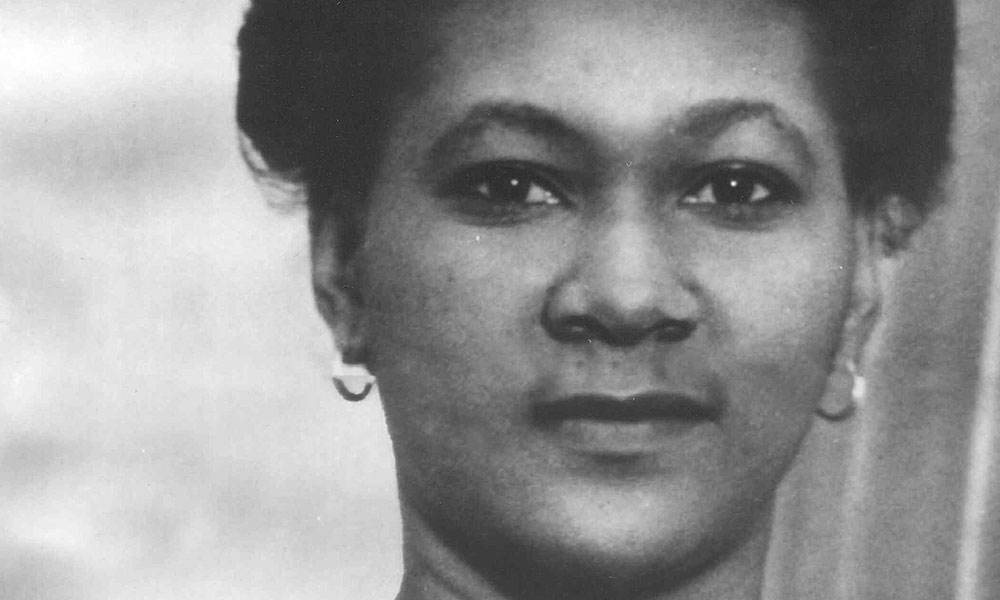Robert Douglas
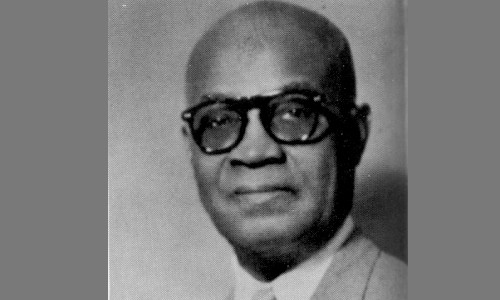
Robert (registered as Isaac Lewis) Douglas was born in St. Kitts on the 4th November 1882. He was the son of Robert Gould Douglas, a clerk, and his wife Margaret, residents of New Town. By the 1890s St. Kitts was experiencing serious social and economic difficulties that culminated in the violent disturbances of 1896, known as the Portuguese Riots. For many migration in search of work was the only option. Douglas was among the many Kittitians who made the move.
Douglas arrived in Harlem, New York in 1901. He settled in West 52nd Street and found work as a doorman at Columbus and 84th Street. He worked 12 hours a day, seven days a week with every third Thursday and Sunday off, all for a wage of $4 a week. In 1905, during one of his days off, he was invited by a fellow doorman to see a basketball game on West 59 Street, in a gym five flights off the street. He thought it was “the greatest thing in the world.... You couldn’t keep me off the court after that.”
Douglas loved sports and like many who grew up in New Town, he was a good swimmer. Basketball was new to him. He played it enthusiastically if not skilfully. Soon he quit his doorman’s job and started a Caribbean Athletic club promoting various sports but with a particular emphasis on cricket, a game he would have enjoyed in his home in the West Indies. He also played for the Spartans Cricket Club who played other Black clubs in New York.
It was difficult at the time for black persons to become professional sports men. Discrimination barred them from participation in major teams and professional leagues. The only way out of this situation was for black people to organise their own sports clubs. However Douglas soon became disenchanted with amateur basketball as he was not allowed to keep players who had received money for playing other sports. In 1923, he launched the first black professional basketball team.
That year he approached, William Roche another West Indian who had prospered through real estate. In 1922 Roche built a two storey entertainment centre which he called the Harlem Renaissance Casino. The first floor was a movie theatre and the second floor was a ballroom that was rented out for dances, dinners and shows. Douglas wanted to rent the ballroom for a basketball game every Sunday night and for practice sessions. At first Roche was worried that that kind of activity would ruin his beautifully polished dance floor but when Douglas offered to name his team the Renaissance he saw a chance of some serious publicity and agreed to the allow the team to play.
As basketball was not then a major attraction, Douglas arranged for his team play with the dance bands. This meant that patrons enjoyed several hours of dancing and a basketball game in the same night. Portable baskets where installed in front of the bandstand and folding chairs along the side-lines and on the 30th of November 1923, the Harlem Renaissance met their first challengers the Chicago Collegians whom they beat with a score of 28 to 22. Douglas later explained, “They’d stop dancing while you played, While the team rested, they danced some more, then after the game they danced some more.”
In the 1920's basketball was more of a team sport. Fifty years later, Douglas reminisced, “years ago a man wouldn’t dare try to take a ball up-court without passing to a fellow player. If a player had started that one-on-one stuff you see so much of today, I would have yanked him right away. We called that hogging the ball.” The game was slower but changes were being made which turned it into the fast game that it is today. The size of the ball was decreased and its laces began to disappear so that it became easier to dribble and the centre jump after each basket was eliminated. As a result, the Rens became a “fancy passing team that moved the ball around with such wizardry and deception that the opposition sometimes seemed helpless and beleaguered.”
During their first years the Rens played in New York City. Gradually they spread their activities further afield into the South and Midwest. By the late 1920s Douglas, coach and road-manager Eric Illidge and the team travelled by bus across the US maintaining a hectic schedule of a game a day and twice on Sunday, often playing more than 120 games annually. They took on all comers - professional, semi-pro and black college. As the first all-black professional basketball team they were pioneers. Their presence and the skills they exhibited were often a statement that spectators and rival teams did not always like. Their games against the Original Celtics were crowd pullers often drawing as many as 15 000 spectators. Civil on the court, the games between the two teams were often accompanied by race riots. Douglas and his team stirred away for trouble as much as they possibly could.
The Celtics were a team that revolutionised basketball. The Rens learnt from their tactics and often used them against other teams and later against the Celtics themselves. By then the younger, more agile, black team had the advantage. A true business man, Douglas kept close watch on the takings for the night. Coach Illidge carried a tabulator to count the gate as Douglas stipulated that the team would not play unless Illidge had the team’s share in his hands. Realising that performance was what brought in the crowds, Douglas gave his team additional incentives.
As no professional league would accept a black basketball team in its ranks, Douglas and the Rens became barnstormers of necessity. To avoid discrimination and the violence that often accompanied it, they would not accept food or lodging while on the road. Instead they would drive long journeys to and from matches or they slept and ate on their team bus when they could not find safe accommodation. The bus was another demonstration of Douglas’ business sense. The Blue Goose, was a customised bus, with reclining seats and equipped to carry food. It meant that the team arrived at an event more rested and that they could avoid the racist indignities that they were bound to run into during their travels.
Douglas and his team did their talking from the ball court. In 1932 they won 88 straight games in one remarkable 86 day stretch. Between 1932 and 1936, the team had a record of 473 to 49 games. In March 1939 they defeated the National Basketball League champions, Oshkosh All-Stars 34-25 and captured the championship at the first World Professional Tournament in Chicago. The Evening Telegram raved, “They are the champions of Professional basketball, it is time we dropped the “coloured” champions’ title.”
After the victory, Douglas bought jackets for the team to celebrate the triumph. The Jacket read NY Rens Colored World Champions. For the careful Douglas it was a compromise title which celebrated the victory without antagonising racists fans of the game. Team member John Isaacs, however was younger and less cautious. With a razor borrowed from Douglas himself he carefully scraped off the word colored.
During the World War II, travel restrictions put an end to the hectic routine that the Rens had engaged in. Douglas suspended play for the duration and then tried to regroup when the war was over. By then many of his players had moved elsewhere. When the American Basketball League was formed he managed to get the team included in 1948. As part of the agreement, Douglas had to move his team to Dayton, Ohio where they played their last game in 1949.
Douglas’ pioneering venture earned him the title of Father of Black Professional Basketball. Douglas’ influence and the impact of his Rens continued to be felt in the years following the team’s disbandment. Together they showed that African-Americans could run a successful athletic organisation despite the racist environment in which they functioned. In 1972 Douglas became the first black man to be inducted into the Hall of Fame. Robert Douglas died on the 16th July 1979.
Dr. Lenore Harney
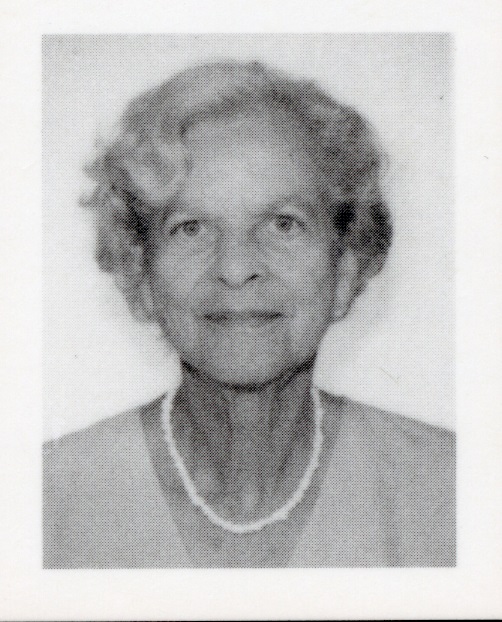
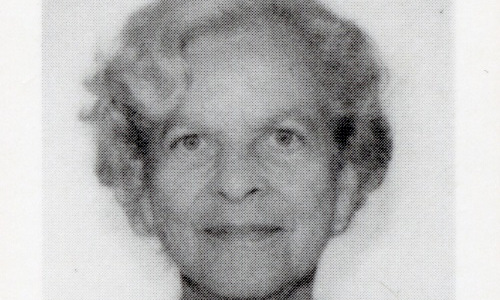
Jean Lenore Harney was born in St. Kitts on April 14th, 1925 to Mr. John Leonard Harney, a local businessman, and his wife, Mae. She was the youngest of their five daughters.
She was educated, both at the primary and secondary levels, in St. Kitts. As a student at the Girls High School, Lenore (the name she was better known by) competed for the Leeward Islands Scholarship against other outstanding students, male and female, from all secondary schools in Antigua and Barbuda, Montserrat and St. Kitts and Nevis. She won the Scholarship in 1942, becoming the first female student from St. Kitts and Nevis to win it. The Leeward Islands Scholarship was the sole scholarship that was available at the time for students in the Leeward Islands. It was awarded annually to the student from these islands who earned the most outstanding results in the Cambridge School Certificate Examinations, offering the winning student the opportunity to attend university.
She studied medicine at Liverpool University in the United Kingdom and upon qualifying, became the first female doctor from St. Kitts, Nevis and Anguilla. She returned to St. Kitts and worked at the Cunningham Hospital for several years.
She went on to further her studies at Harvard University, specializing in Public Health Medicine, after which Public Health became the focus of her medical career.
Dr. Harney had a successful career in many countries, working in Barbados from 1960 to 1969 as a Senior Medical Officer, then with the Pan American Health Organization (PAHO) and as the World Health Organization (WHO) representative in several countries in the Caribbean and Central America from 1969 until 1974. During her period of employment with PAHO and WHO she was at the forefront of the immunization programs for MMR and Polio in the region. Immediately following her work with PAHO and WHO, she held the post of Chief Medical Officer of Barbados for over ten years.
She ultimately received an award from the Caribbean Public Health Association in 1994 for her commitment to the public health of the region.
While living in Barbados in the sixties, Dr. Harney earned her private pilots license, becoming the first female pilot from St. Kitts and Nevis.
She spoke several languages, including Spanish and French. Always wanting to learn more, she took Mandarin lessons at the Taiwanese Embassy in St. Kitts in her 80s.
She authored two published books and many short stories.
She was a champion of women’s rights, had a great sense of humor and travelled the world extensively.
Dr. Harney married local retired businessman Mr. Sydney Blake when they were both in their mid-80s and finally returned home to St. Kitts. She spent her remaining years traveling between St. Kitts and Barbados, where she still maintained a home.
She passed away on June 24th, 2020 at the age of 95.
Ismay Burt
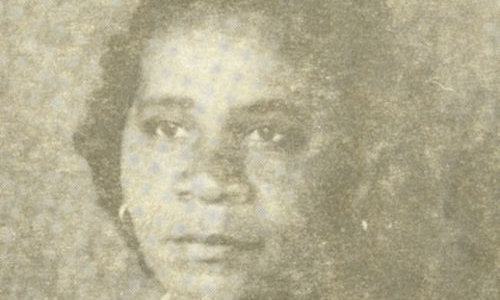
Ismay Burt was the daughter of Hennrietta Edmeade of Sandown Road, New Town. She was born on the 20th March 1916. She was educated at the Girls’ School where Isa Bardley was headteacher. It was Bradley’s custom, at the time, to pick bright students to become pupil teachers and then advance them to teachers’ training. Young Ismay was chosen for the teaching career. Her home became a meeting place for others following the same path. She was eventually awarded a scholarship to the Spring Garden Teacher Training College in Antigua where she excelled.
On her return to St. Kitts, Burt taught at the Basseterre Boys School where she prepared students for the annual common entrance and Scholarship examination for admission to the Grammar School. Teacher Buttie, as she was affectionately called, encouraged her students to do their best and proudly followed their achievements through like. The late Joseph S Archibald QAC described her as a ”Light to all. Because of her there was no darkness or guile.” At the same time she was also “the passport needed for the adult functions without which one did not bother to ask for permission to attend.”
In 1946 Miss Burt along with four others from the Leeward Islands earned a grant through the Department of Development and Welfare in the West Indies to learn handicrafts in Trindade. She became a specialist teacher and, on her return, facilitated a workshop to share her newly acquired knowledge with other teachers. This was held at the pavilion at Warner Park and was attended by at least one teacher from every public school. She taught hat weaving and the making of bags purses, placemats, fans and baskets out of screw pine. Her training sessions were designed to encourage independence and enhanced earrings especially among young women. Burt took this development in her career so seriously that she often used her own resources to make classes possible. She also organized exhibitions of the work produced by her trainees.
Miss Burt was an active member of the Newtown Community especially through Hope Chapel. In the nearby Lodge building she hosted an annual Christmas programme featuring the Newtown Junior Choir which she trained. She organized the Christmas Tree lighting at Ponds Pasture and made sure there were gifts for the less privileged in the community. Teacher Burt also organized parties for returning nationals at Christmas.
When she retired from teaching, Ismay Burt continued to teach handcrafts to teachers in training. and during the summer vacation. She organized a Golden Age Club out of her home in Birdrock. She was a member of the Soul Carnival Organising Committee and served on the Social Security board.
Ismay Almyra Burt died on the 8th May 2001
Inez Barker
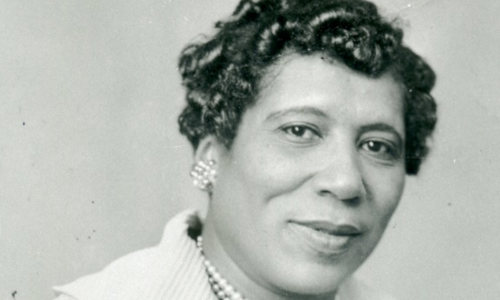
Inez Barker was born on the 29th May 1911 and christened Inez Susanna Billinghurst Walker. Her father was Frederick Alfred Walker an estate manager living in Old Road. Her mother was Catherine Louisa nee French, who was born Antigua but who was living in Old Road at the time of her marriage to Walker. Catherine described herself as a seamstress on her marriage certificate The children grew up in their maternal grandfather’s house – the Manhattan. After his death, the property was sold, and Catherine bought a two storey building on the West Square Street. Inez and her older brother Charles were educated at the Convent School in Basseterre where the discipline of the home was further encouraged and where their mother’s eloquence in standard English was reinforced.
Inez married George Barker in her early twenties. He was a Guyanese sugar boiler who came to St. Kitts to work at the Basseterre Sugar factory. George Barker was a champion cyclist in his country and he introduced cycling as a sport in St. Kitts. Barker also brought his photographic skills to Basseterre. The couple had three sons who grew up in the family home on the Square which also housed the Photo Studio on the ground floor.
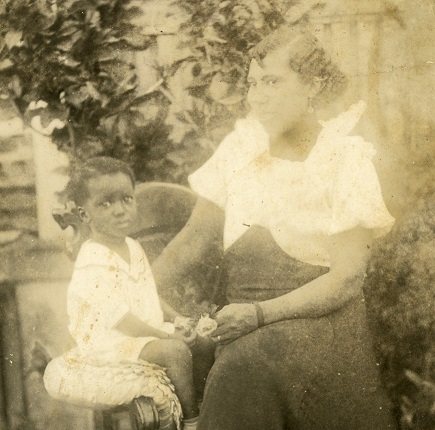
Barker encouraged his young wife to participate in his photography sessions and she proved to have a talent for it. Not only did she learn the techniques of using the camera, and developing negatives, her calm and easy manner made the sitters feel comfortable. She knew how to pose them to the best effect and was very adapt at dealing with children, catching their attention for the camera at just the right moment. When George Barker died in 1939, his very young widow was able to step into his trade and continue the business.
At a time when the mass appeal of photography was in its infancy, Inez Barker’s skill at making her subjects feel comfortable attracted people to her studio. Many went to her for passport photographs when they were preparing to migrate in search of work, others would wander to it to send photographs to family and friends abroad or to capture the outfit that they felt great in. She photographed cricket and football teams both local and visitors and Regiments stationed in St. Kitts. Her dark room was used to develop negatives for Police investigations as the Force did not have one at the time. Mrs. Barker was the photographer of weddings and special events and then from 1957 Carnival became an annual event that kept her very busy. She served on the Organizing Committee and took photographs of the various shows and parades. Through hard work and professionalism, she became the first Kittitian woman to work as a photographer.
Two rooms in the Barker Household were set aside as guest rooms. These were often occupied by visitors to Basseterre. Cricketers in particular found this to be an inexpensive arrangement when traveling for matches. They would bring boxes of food to share with the hosts who gave them lodgings and they also shared descriptions of matches and travels. Mrs. Barker enjoyed meeting people and loved to hear their stories. She had friends in many Caribbean islands, North America and the UK. She was generously hospitable. Whenever friends and family visited, she organized picnics at Frigate Bay and took along food, drinks and her camera. She also enjoyed writing letters and would often be seen awaiting appointments with a notebook on her lap composing her messages to friends and family abroad.
On a small but heavy New National sewing machine that her mother had bought while in England, Inez Barker sewed new clothes and repaired the ones her sons wore giving them a lesson in frugality. She also refused to replace her machine with a Singer, that was the craze at the time. Mrs. Barker was able to send her three sons to Convent School and then to the Grammar School. She kept discipline within her household while allowing her sons to enjoy good company and participate in cultural events. Her love of history – Kittitian, West Indian and African - ensured that they grew up with a sense of pride in their heritage and they quickly learnt to appreciate the people in the community who had contributed to its development.
Despite the energy it must have taken to bring up three boys on her own, Mrs. Barker was an active member of the Methodist Church and still found time to become involved in community programmes. She worked with in the Million Penny Scheme launched by Millie Neverson to raise funds to provide a home for orphaned children and in the Lunch Room which provided meals for the needy children of the town during the Second World War.
Inez Barker, known as Dolly, was a great photographer because she loved people and she had a zest for life that was infectious. A woman with a big heart, her funeral in April 1977 was attended many including friends who made the journey to St. Kitts to say their final good-byes as well as dignitaries of the island.
Pam Tyson
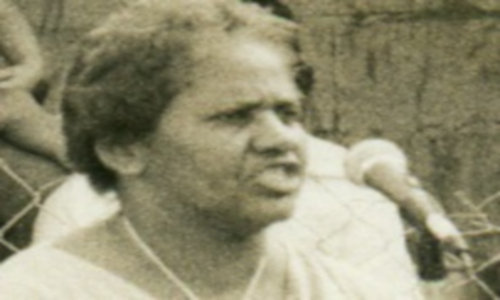
Pamela Ann Mabel Tyson was born on the 7th April 1932 to Veronica nee Peters and her husband Warren Tyson. Her father was an employee of J W Thurston and Vo, Ltd who rose through the ranks because of his diligence and sense of responsibility.
Like him, Pamela worked her way up in the civil service. She started as a substitute in the Crown Attorney’s Chambers then served at the Post Office and Treasury Department. In 1951 she was appointed Junior Clerk and once again found herself in the Crown Attorney’s Chambers, where she performed secretarial duties, quickly earning a promotion to Senior Clerk. From the start of her career, Miss Tyson understood that being a civil servant required flexibility as well as being able and willing to server wherever ones expertise was required.
Tyson had a flair for organization and management, and in 1964 this earned her an appointment as Executive Officer in charge of the Central Registry. In 1967 she was transferred to the Health Department, then in 1980 she was promoted to the post of Personal Assistant to the Premier. Sir Kennedy Simmonds admitted that appointing her as Personal Assistant was one of the best decisions he had ever made. He had discovered her abilities when in the 1970s she was President of the Netball Association and he was Vice-President. She ended her career as a civil servant in 1995.
However, it was in Netball that Pam Tyson made her biggest impact. She was a founding member of the St. Kitts Netball Association, formerly known as the St. Kitts Netball League. She worked her way through the posts of Treasurer, Vice President and President between 1966 and 1986. She was the first President of the St. Kitts Netball Association and the First President of the Caribbean Netball Association. She became Manager and Head of the Delegation to the World Tournament. She was also the First Vice President of the West Indies Netball Board of Control.
Throughout her involvement with the game, the personal interest she showed enabled the young sportswomen to rise from the ordinary to the extra ordinary. She motivated the netballers to strive for excellence, constantly reminding them that size should not be a limitation, and encouraging a balance between sport and scholarship
Under her leadership the St. Kitts Netball team made its mark in the region. In recognition of her contribution Netball City was renamed after her and is now known as the Pam Tyson Netball Complex. A speaker at the renaming said “Whenever one speaks about netball, the name Pamela Tyson has to be first and foremost. She is the foundation upon which our star players were made, because of her strong leadership qualities and the discipline she instilled in them.”
Her accomplishments made her a citizen of the sporting world as she became Manager and Head of the Delegation to the World Tournament. She was also the First Vice President of the West Indies Netball Board of Control.
For 40 years, Tyson was also the director of the Choir at the Co-Cathedral of the Immaculate Conception. She was an active member of the the Business and Professional Women’s Organization and the recipient of numerous awards for her contributions to Sport and community development. Pam Tyson died in Barbados on the 11 February 2013.
National Archives
Government Headquarters
Church Street
Basseterre
St. Kitts, West Indies
Tel: 869-467-1422 | 869-467-1208
Email: NationalArchives@gov.kn
Website: www.nationalarchives.gov.kn
Follow Us on Instagram

